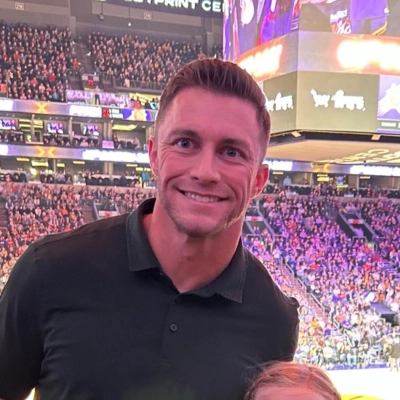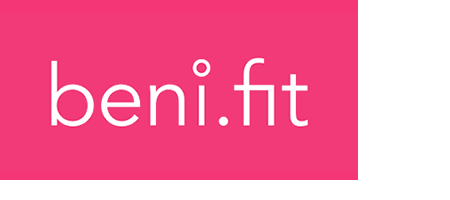Lessons from Failed Employee Wellness Programs: Leaders Share Experiences
Employee wellness programs can make or break workplace morale, but not all initiatives succeed. This article draws from the experiences of industry leaders who have witnessed both triumphs and setbacks in corporate wellness. Their insights offer valuable lessons for creating effective, inclusive, and sustainable employee wellness programs that truly resonate with employees.
- Listen First, Design Wellness Together
- Inclusivity Matters in Employee Wellness Programs
- Employee Feedback Shapes Effective Wellness Initiatives
- Flexibility Trumps Rigid Fitness Commitments
- Address Underlying Issues, Not Surface Symptoms
- Align Wellness with Team’s Operational Reality
- Simplify Access to Increase Benefit Utilization
- Listening Precedes Effective Wellness Solutions
Listen First, Design Wellness Together
I’ve learned that even with the best intentions, employee wellness initiatives can miss the mark if they’re built around assumptions rather than actual needs.
In our early days, we rolled out a company-wide wellness challenge—30 days of fitness goals, mindfulness prompts, and competitive step tracking. On paper, it looked great: it was structured, inclusive, and had clear incentives. But in practice, it fell flat. Participation dwindled after the first week, and a few team members privately shared that it felt more like a pressure campaign than something designed to support their well-being.
The mistake? We designed it for employees, not with them. We assumed that a one-size-fits-all solution—centered around physical health—would resonate with everyone. What we missed was understanding the deeper spectrum of wellness our team actually needed: for some, it was mental health support; for others, more flexible time to decompress or deal with family responsibilities.
That initiative taught me the value of listening first. Today, we approach wellness much more holistically and collaboratively. We conduct anonymous check-ins before introducing any initiative and focus more on choice rather than mandates. Our current strategy includes a mix of offerings—mental health stipends, no-meeting Fridays once a month, and access to therapy platforms—and we encourage team members to choose what works for them.
The biggest lesson? A wellness program should never feel like another task to complete. It should feel like support. When it’s grounded in empathy and tailored around real needs—not trends or assumptions—it becomes a genuine asset to the culture and productivity of the company.
Inclusivity Matters in Employee Wellness Programs
At our company, we initiated a “Step Challenge” to promote employee wellness. This initiative encouraged teams to track their steps and compete for prizes. Initially, many employees participated enthusiastically, but engagement declined after a few weeks. We discovered that remote workers in different time zones and those with mobility issues felt excluded.
The key lesson we learned was that inclusivity is crucial. Wellness programs should cater to diverse abilities, schedules, and preferences rather than focusing solely on physical health. After realizing this, we shifted to a more balanced approach. We now offer flexible wellness stipends and various options, including mental health apps, ergonomic support, and activities that allow everyone to participate meaningfully.
 Naima Ch
Naima Ch
Marketing Head and SEO Specialist, Morse Code Translator
Employee Feedback Shapes Effective Wellness Initiatives
At one point, we attempted to implement an employee wellness program that focused on fitness challenges, but this effort was unsuccessful. Although the idea had potential, few employees were willing to participate, as most considered the program irrelevant to their interests and needs. This experience has taught me a valuable lesson about the importance of employee feedback in crafting effective wellness programs.
Listening to and understanding the real employee motivators is key to creating effective programs that employees respond to. Due to this failure, I realized the importance of collaborating with the team and communicating with them in advance before initiating any new initiatives. I believe that effective wellness programs should be developed based on employee behavior and preferences. The feeling of ownership and involvement can help the organization develop a more efficient wellness strategy, as well as approaches that will provide employees with actual well-being and engagement.
 Jenna Brennan
Jenna Brennan
VP of Growth, Dutch
Flexibility Trumps Rigid Fitness Commitments
One employee wellness initiative I saw fail firsthand was group fitness subscriptions. These were essentially prepaid passes to yoga classes and running groups. I genuinely thought they’d be a hit and a great way to bring coworkers together after hours.
However, they turned out to be too rigid. People’s schedules are packed these days, and the commitment required to sign up in advance just didn’t fit their lifestyles. Since participants had to put their names down ahead of time, many were hesitant to commit, fearing they’d have to cancel at the last minute. As a result, most simply opted out altogether.
It was a case of good intentions missing the mark. What I’ve learned since is that flexibility is key. Offering a gym stipend or access to drop-in classes has been far more successful. When people can choose what works for them, without pressure or fixed commitments, they’re more likely to participate.
The big takeaway for me: pushing too hard can backfire. Giving people the freedom to define their own fitness journey is not only more respectful, it’s far more effective.
 Jon Hill
Jon Hill
Managing Partner, Tall Trees Talent
Address Underlying Issues, Not Surface Symptoms
A few years ago, we launched what we believed was a well-intentioned wellness initiative: free monthly yoga sessions for staff. We hired an excellent instructor, cleared space in the group room, and even offered the sessions during paid hours. On paper, it appeared to be a success.
However, after three months, attendance had dwindled to nearly zero.
Initially, I felt frustrated. We had made this investment for them, and they weren’t participating. But when I finally sat down with a few team members and inquired about their lack of attendance, their answer was eye-opening: “We don’t need yoga. We need to not feel like we’re drowning.”
That was the wake-up call.
I had attempted to address burnout with surface-level wellness. What they truly needed was structural support: better shift coverage, realistic caseloads, more mental health days, and permission to step away without feeling guilty. We were offering calm without addressing the underlying chaos.
Consequently, we suspended the yoga program, assembled a cross-team feedback group, and began reworking the real stressors—starting with coverage and boundaries. We also established quiet rooms, increased supervisor check-ins, and made it acceptable to actually use PTO without pushback.
The most significant lesson? You can’t “Namaste” your way out of burnout. Wellness isn’t a perk—it’s a foundation. If you don’t address what’s draining your team, no amount of smoothies or meditation will salvage your culture.
That experience transformed how I lead. Now, every wellness idea is evaluated against one crucial question: “Will this provide our people with relief—or just another obligation?”
 Andy Danec
Andy Danec
Owner, Ridgeline Recovery LLC
Align Wellness with Team’s Operational Reality
One early employee wellness initiative we tried was a “no-meeting Friday” policy, intended to give the team uninterrupted time to recharge or focus on deep work. On paper, it sounded great. But in reality, it quietly failed.
Because we’re a small, fast-moving team, Fridays often became the catch-up day for everything that didn’t fit earlier in the week. People felt guilty taking real time off, and instead of reducing stress, it just shifted the pressure.
The most valuable lesson? Wellness can’t be performative; it has to match the rhythm and reality of the team. Now, instead of rigid rules, we’ve adopted a more flexible culture: async check-ins, clear priority-setting early in the week, and open conversations about workload and energy. We still encourage rest, but in ways that actually work for how we operate.
Wellness only works when people feel safe to use it.
 Ali Yilmaz
Ali Yilmaz
Co-Founder&CEO, Aitherapy
Simplify Access to Increase Benefit Utilization
We once rolled out a wellness stipend with the idea that people could use it for anything from gym memberships to therapy. On paper, it sounded great. However, months into the program, barely anyone was using it. It turned out that we hadn’t explained it well, and people weren’t sure what counted as eligible expenses or how to get reimbursed, so they just ignored it.
The lesson? Benefits only work if they’re easy to understand and clear to access. We scrapped the old system and replaced it with a pre-vetted set of options through a partner platform. As a result, usage increased, and people began discussing how they were using the benefit. This experience taught us that good intentions don’t mean much if access feels like a chore.
 Jonathan Anderson
Jonathan Anderson
Co-Founder, Green Home Pest Control
Listening Precedes Effective Wellness Solutions
A wellness program that doesn’t fit your team’s real needs is just a checkbox—and employees see right through it.
We once rolled out a mindfulness app subscription across the company, thinking it would support stress relief. But engagement was almost nonexistent. Why? Because we never asked what kind of support our team actually wanted. When we finally surveyed them, they asked for more schedule flexibility and quiet focus hours—not another screen-based solution. The lesson? Wellness starts with listening, not assuming.
Mastering internal communication has been as critical to our team health as any external PR win.
 David Quintero
David Quintero
CEO and Founder, NewswireJet



